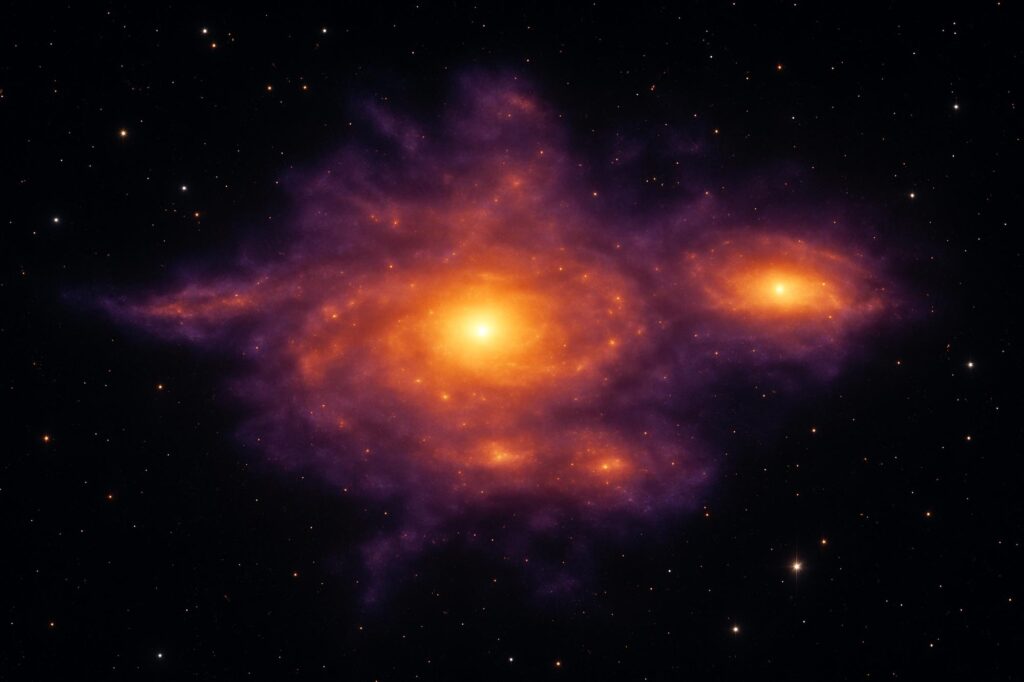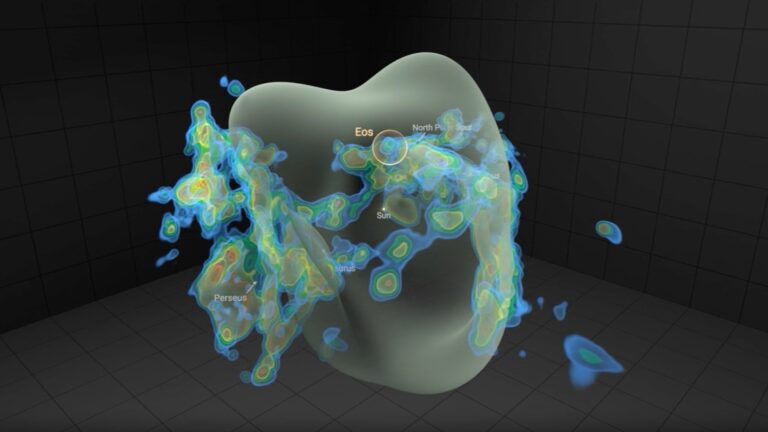
12-Billion-Year-Old Milky Way Twin Shocks Astronomers – SciTechDaily
2025-04-25T13:36:34Z
A surprisingly well-formed spiral galaxy has been spotted just a billion years after the Big Bang, challenging long-held beliefs about how quickly galaxies evolve. Named Zhúlóng, after a Chinese solar dragon, it looks remarkably like our Milky Way, with spira…
A surprisingly well-formed spiral galaxy has been spotted just a billion years after the Big Bang, challenging long-held beliefs about how quickly galaxies evolve.
Named Zhúlóng, after a Chinese solar dragon, it looks remarkably like our Milky Way, with spiral arms, a central bulge, and a sprawling disk of stars. Detected by the James Webb Space Telescope during a serendipitous deep-sky survey, this discovery is pushing scientists to rethink the timeline of galactic evolution. More finds like Zhúlóng could completely rewrite our cosmic origin story.
Defying Expectations: Massive Galaxies in a Young Universe
Traditionally, astronomers believed that large spiral galaxies, like our Milky Way, took billions of years to form, gradually assembling from smaller, irregular galaxies. In the early universe, galaxies were expected to be small, chaotic, and misshapen. But the James Webb Space Telescope (JWST) is painting a different picture. Its deep-field imaging has revealed unexpectedly massive and well-structured galaxies forming much earlier than anticipated, forcing scientists to rethink the timeline of galaxy formation.
“We named this galaxy Zhúlóng, meaning ‘Torch Dragon’ in Chinese mythology.” Dr. Mengyuan Xiao
A Milky Way Twin in the Early Universe
Among the most striking of these discoveries is Zhúlóng, the most distant spiral galaxy candidate identified to date, observed at a redshift of 5.2, placing it just one billion years after the universe began. Despite its early age, it mirrors many characteristics of mature galaxies in our nearby universe.
“We named this galaxy Zhúlóng, meaning ‘Torch Dragon’ in Chinese mythology. In the myth, Zhúlóng is a powerful red solar dragon that creates day and night by opening and closing its eyes, symbolizing light and cosmic time,” says Dr. Mengyuan Xiao, postdoctoral researcher at the Department of Astronomy of the Faculty of Science of UNIGE and lead author of the study.
“What makes Zhúlóng stand out is just how much it resembles the Milky Way in shape, size and stellar mass,” she adds. Its disk spans over 60,000 light-years, comparable to our own galaxy, and contains more than 100 billion solar masses in stars. This makes it one of the most compelling Milky Way analogues ever found at such an early time, raising new questions about how massive, well-ordered spiral galaxies could form so soon after the Big Bang.
Cosmic Serendipity: How the Discovery Happened
Zhúlóng was discovered in deep imaging from JWST’s PANORAMIC survey (GO-2514), a wide-area extragalactic program led by Christina Williams (NOIRLab) and Pascal Oesch (UNIGE). PANORAMIC exploits JWST’s unique “pure parallel” mode – an efficient strategy to collect high-quality images while JWST’s main instrument is taking data on another target. “This allows JWST to map large areas of the sky, which is essential for discovering massive galaxies, as they are incredibly rare,” says Dr. Christina Williams, assistant astronomer at NOIRLab and principal investigator of the PANORAMIC program. “This discovery highlights the potential of pure parallel programs for uncovering rare, distant objects that stress-test galaxy formation models.”
Challenging Old Theories of Galaxy Evolution
Spiral structures were previously thought to take billions of years to develop, and massive galaxies were not expected to exist until much later in the universe, because they typically form after smaller galaxies merged together over time. “This discovery shows how JWST is fundamentally changing our view of the early Universe,” says Prof. Pascal Oesch, associate professor in the Department of Astronomy at the Faculty of Science of UNIGE and co-principal investigator of the PANORAMIC program.
Future JWST and Atacama Large Millimeter Array (ALMA) observations will help confirm its properties and reveal more about its formation history. As new wide-area JWST surveys continue, astronomers expect to find more such galaxies – offering fresh insights into the complex processes shaping galaxies in the early Universe.
Reference: “PANORAMIC: Discovery of an ultra-massive grand-design spiral galaxy at z ∼ 5.2” by Mengyuan Xiao, Christina C. Williams, Pascal A. Oesch, David Elbaz, Miroslava Dessauges-Zavadsky, Rui Marques-Chaves, Longji Bing, Zhiyuan Ji, Andrea Weibel, Rachel Bezanson, Gabriel Brammer, Caitlin Casey, Aidan P. Cloonan, Emanuele Daddi, Pratika Dayal, Andreas L. Faisst, Marijn Franx, Karl Glazebrook, Anne Hutter, Jeyhan S. Kartaltepe, Ivo Labbe, Guilaine Lagache, Seunghwan Lim, Benjamin Magnelli, Felix Martinez, Michael V. Maseda, Themiya Nanayakkara, Daniel Schaerer and Katherine E. Whitaker, 16 April 2025, Astronomy & Astrophysics.
DOI: 10.1051/0004-6361/202453487
Auto-posted from news source






